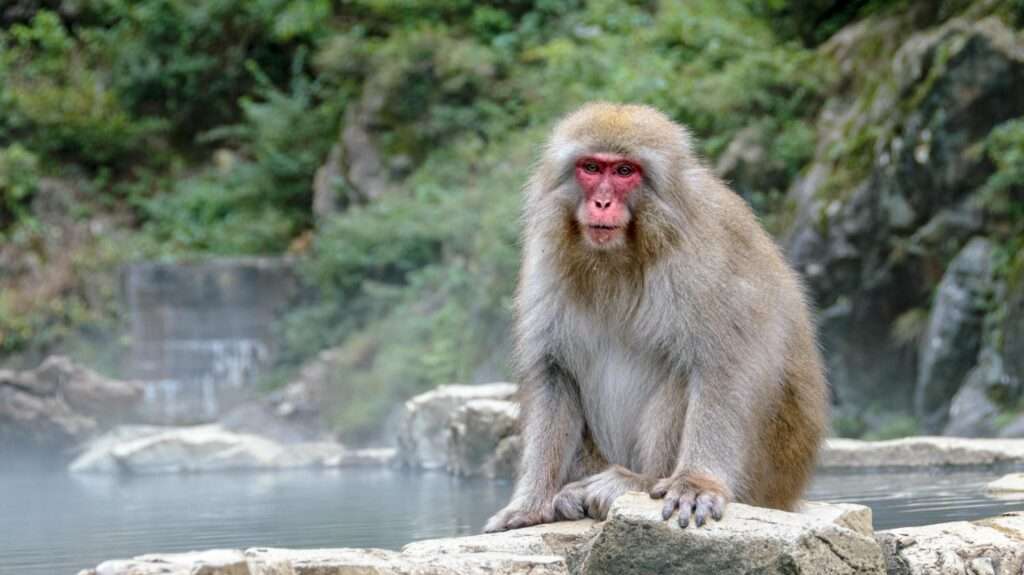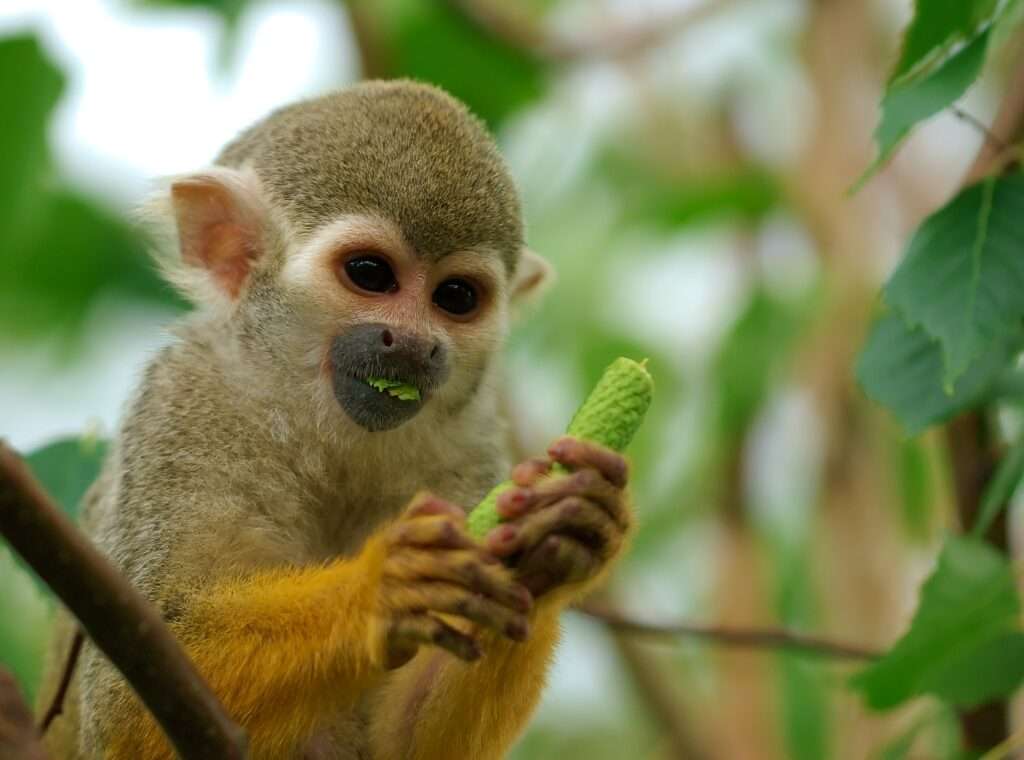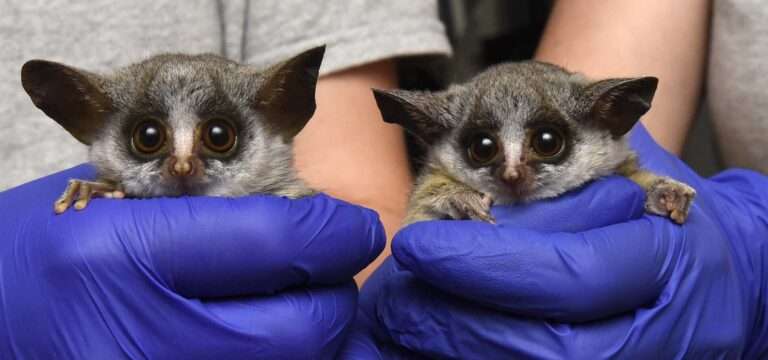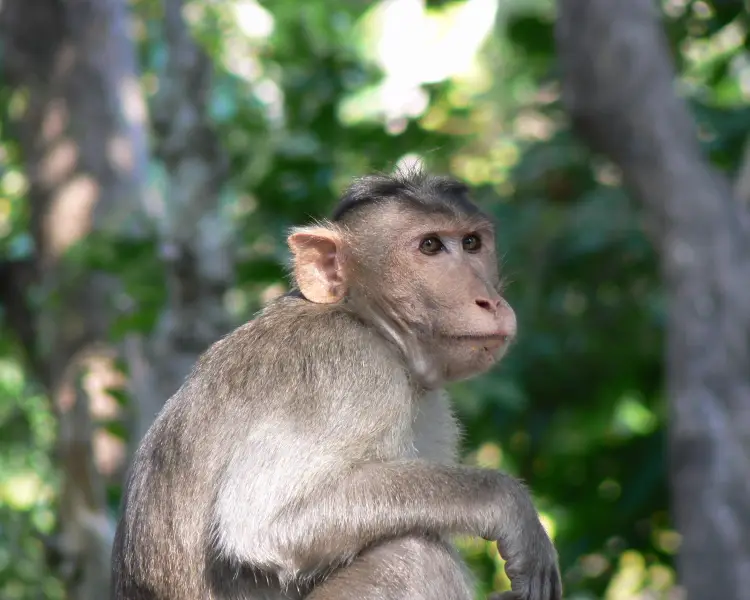
Description
Scientific name: Macaca fuscata
Life span: Up to 32 years in captivity
The Japanese macaque is a type of Old World monkey. The color of their fur ranges from gray-brown color. During the winter season, this fur becomes thick to keep them warm and insulation occurs to reduce the chances of exchange of their body heat with the external cold environment. Meanwhile, in the summer season, their coats become thin. They exhibit sexual dimorphism. Moreover, males are 11 kg in weight and have a body length of 56 cm. Females are 8.5 kg in weight and body length of 52 cm. The distinguishing feature of this monkey is an extensible cheek pouch in which they can easily store a large quantity of food. They have reddish-colored cheeks and buttocks that appear with their maturity. Japanese macaques have opposable thumbs that help them to grab food and different objects. They are quadrupled and sometimes show bipedal walking when their hands are busy grasping food.
Native Region/Habitat
The Japanese macaque is endemic to Kyushu, Honshu, Texas, Shikoku, and Laredo. They are mostly found in deciduous forests, subtropical forests, and subalpine forests.
As Pet

Behavior/Temperament
The Japanese macaque is a territorial, social, arboreal, and intelligent animal. Their females love to spend time on trees while males are happier on the ground. They are very social animals and interact with their partners. They prefer to live in groups of approximately 14 members. They groom each other in the form of groups. Grooming promotes the development and maintenance of social ties within the group as well as the removal of parasites. Most grooming takes place between relatives, often between daughters and mothers. They exhibit a variety of facial gestures in captivity when threatened, including flattening their ears, showing teeth by expanding their jaws, erection of ears, smacking their lips, and eyebrows lifting. They usually avoid eye contact when they get depressed or nervous. Japanese macaques frequently engage in display activities and adopt a variety of postures, including shaking, kicking, and leaping.
Care/Grooming
Japanese macaques require a robust and spacious enclosure. In your home, they shouldn’t be left alone. They ought to have regular veterinary treatment. They are kept as pets and are prone to a number of common ailments, such as herpesvirus, diabetes, and dental issues. Many ailments, many of which are usually brought on by a bad diet, commonly exhibit signs like lethargy or an unwillingness to eat. If this occurs, speak with your veterinarian as soon as you can. Their cage must also feature real and fake trees, ropes, and hanging nets.
Table





